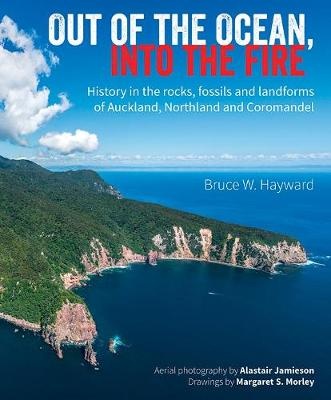Out of the Ocean Into the Fire
Out of the Ocean Into the Fire
HISTORY IN THE ROCKS, FOSSILS AND LANDFORMS OF AUCKLAND, NORTHLAND AND COROMANDEL
Bruce Hayward 2017 GEOSCIENCE SOCIETY OF NEW ZEALAND ISBN: 9780473395964 Pp: 328
Blurb
For decades teachers, biologists, geographers and interested members of the public have asked for an up-to-date account of how Northland, Auckland and the Coromandel Peninsula and their landforms were formed. Here, for the first time, is an accessible account designed to be of interest to all levels of understanding. Almost all of the older rocks were deposited as sediment or erupted as lava on the floor of the ancient Pacific Ocean. Some were plastered onto the coastal edge of Gondwana, and at least 100,000 km3 of these rocks were pushed up out of the ocean and slid onto Northland, about 20 million years ago. About the same time, 1 km-thickness of Waitemata sandstones were deposited in a deep-sea basin over Auckland.Most of the subsequent history of northern New Zealand was dominated by fiery volcanic activity of greater diversity than any area of similar size elsewhere in the world. This included eruptions of andesite stratovolcanoes, giant caldera volcanoes, searing ignimbrite flows, viscous rhyolite domes and at least 200 small basalt volcanoes erupted in seven volcanic fields. The present-day shape and landforms of the region reflect its more recent history with local uplift, erosion, volcanic activity, construction of New Zealand’s largest sand-dune barriers and harbours, and moulding of the coast by the oscillating sea levels during the Ice Ages.
Mini Review
While the blurb does not promise much of the archaeology of the region given the author's credentials in archaeology it is no surprise to find that the book delivers well on that. He covers the economic geology of the area in a way that draws well on the history of its exploitation by Maori and later settlers, with some great maps summarising where past industries have been located. The section on recent moa and other bird extinctions is also a good summary. The illustrations and maps are exemplary, the locations to visit a great addition. A tour de force of broad ranging scholarship and fieldwork. GL
